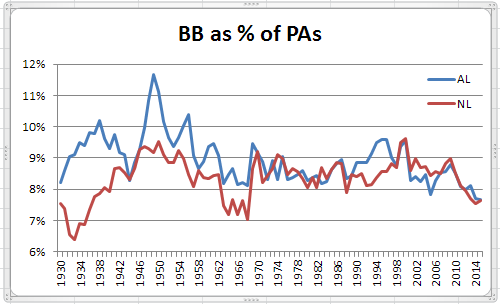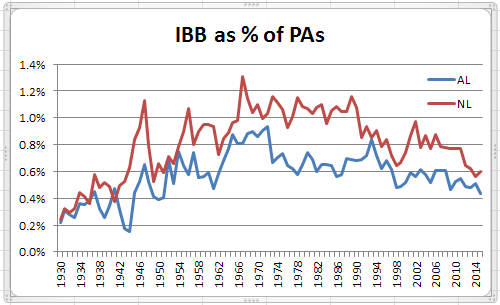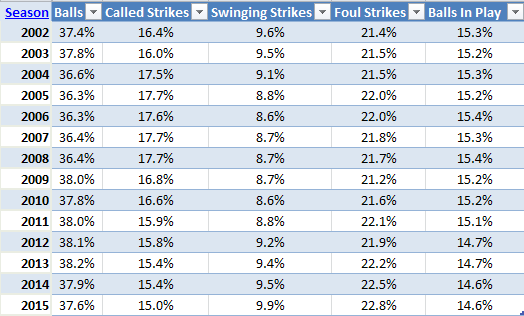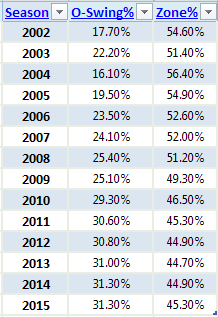MLB walk rates are at historic lows, another artifact of a declining run scoring environment. Rates below 8% of PAs have been recorded in both leagues for the past two seasons, levels not seen since the 1960s in the NL, and not seen previously in the AL in the live ball era.
More after the jump.
As shown on the chart to the left, walk rates for both the NL and AL, after remaining for most of a 40 year period in a tight range between 8% and 9% of PAs, have dropped below 8% in the past 5 years, a rate not seen in the NL in the past 50 years, and not seen for at least 85 years in the AL. This decline is similar to one seen in the 1960s that also coincided with a reduction in run scoring.
The implication would appear to be that pitchers are more confident of retiring batters and thus more inclined to challenge hitters with pitches in or near the strike zone. And, with hitters continuing to swing and miss at record rates, an aggressive approach by pitchers only makes sense.
With pitchers being more aggressive, one would naturally expect fewer intentional walks to be issued, a trend illustrated below.
IBBs are being issued at rates not seen in the AL or NL in more than 60 years, and far below the rates of the 1970s and 1980s.
However, while overall walks declined in the lower run scoring environment of the 1960s, intentional walk rates ballooned in that period, apparently an indication that managers were confident that runners put on base intentionally had a low chance of scoring. The different approach by managers in the current run scoring decline may be a reflection of the influence of sabermetrics on the game. As an example, in “The Book” by Tango, Lichtman and Dolphin, their analysis indicated that there were few situations where it made sense to walk a batter to face the pitcher coming up next, usually the most obvious IBB scenario.
That divergence in in-game strategy between the current day and the 1960s is emphasized in the chart below that shows that declines in IBB rates are even more pronounced than the decline in overall walks.
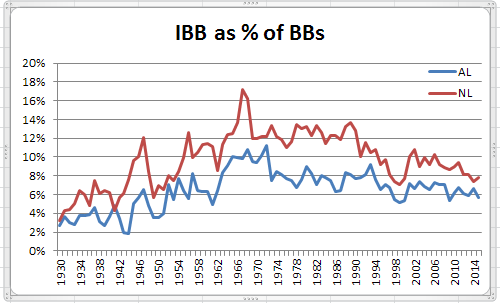 As a proportion of overall walks, IBBs have declined in recent years to levels that, with the exception of a brief dip in the late 1990s, have not been seen since the early 1960s in the AL or NL.
As a proportion of overall walks, IBBs have declined in recent years to levels that, with the exception of a brief dip in the late 1990s, have not been seen since the early 1960s in the AL or NL.

